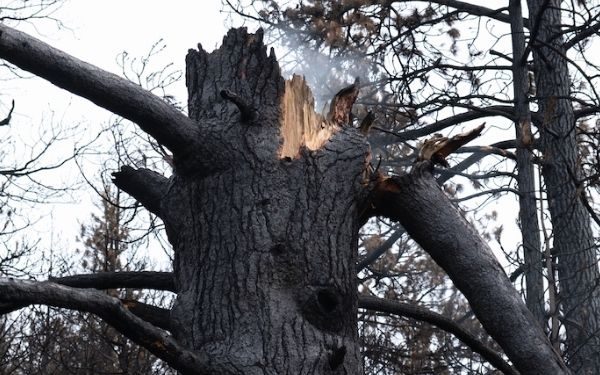Nearly two months after the Durkee Fire, a smoldering snag still sends smoke into the eastern Oregon air. It’s a sign of a bigger issue: Every year, Oregon braces for wildfires and spends tens, sometimes hundreds, of millions to fight them. Yet, they keep getting worse—more intense, more dangerous, and more destructive.
Science shows suppression alone won’t cut it. To truly lower wildfire risk, Oregon must invest in proactive measures: restoring fire-prone landscapes, boosting their resilience, and helping communities prepare for fire and smoke.
Related posts
This legislative session offers lawmakers a chance to take a vital first step. A proposed $280 million per biennium wildfire package includes a comprehensive response plan.
It’s built on input from the Wildfire Funding Work Group—comprising the State Fire Marshal, Oregon Department of Forestry, Governor Tina Kotek, Tribal Nations, and many other stakeholders.
The legislation balances immediate firefighting needs with a longer-term vision. It provides durable funding for reducing wildfire risks before they start and supports communities and public health systems in managing the impact when fires do happen.
This includes science-backed tools like ecological thinning and prescribed burning, which together can cut the risk of severe wildfire in dry forests by up to 72%.
The core issue isn’t new. A century of fire suppression has left over 6 million acres of Oregon’s dry forests choked with small trees and brush—perfect fuel for catastrophic fires. These forests evolved with frequent, lower-intensity burns from lightning and Indigenous practices.
Without fire, forests grow unhealthy and dangerously overgrown, increasing the odds that one spark turns into a megafire.
Strategic, landscape-scale restoration in high-risk areas can reduce fire severity, safeguard communities, and improve forest health. While it takes long-term commitment, the payoff is significant: a recent analysis shows a $7 return for every $1 invested—a 600% return.
Meanwhile, suppression costs are skyrocketing. Oregon spent over $350 million on fire suppression in 2024 alone.
Nationally, federal wildfire suppression now exceeds $3 billion annually, with overall economic damage often topping $100 billion a year. Continuing to fund only suppression is like mopping the floor while the faucet’s still running.
It’s time to break the cycle. That means supporting not only firefighters and fire agencies but also the foresters, scientists, prescribed fire experts, public health professionals, and planners who strengthen our forests and communities before fires start.
These investments are crucial for building fire-adapted, resilient landscapes and safer communities across Oregon.
If we don’t act now, we’ll be here again—facing more extreme wildfires, greater damage, and even higher costs.









